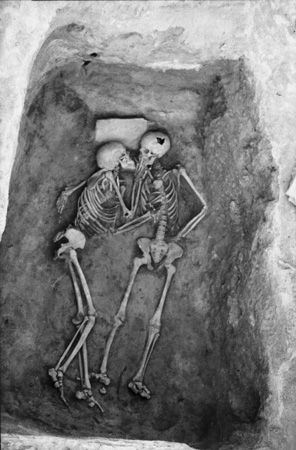
In 1972, archaeologists unearthed a plaster-lined brick bin in the Teppe Hasanlu site in northwestern Iran, an ancient city that had been violently sacked and burned at the end of the ninth century B.C. University of Pennsylvania archaeologist Robert Dyson wrote:
Lying in the bottom of the bin were two human skeletons, a male and a female. The male had one of its arms under the shoulder of the female, while the female was looking into the face of the male and reaching out with one hand to touch his lips. Both were young adults. Neither showed any evidence of injury; there were no obvious cuts or broken bones. There were no objects with the skeletons, but under the female’s head was a stone slab. The other contents of the bin consisted of broken pieces of plaster, charcoal, and small pieces of burned brick but nothing heavy enough to crush the bones.
“Two theories have been suggested to explain this unusual scene,” he wrote. “One, that a pair of lovers had crawled into the bin under some light material of some kind to hide in the hope of escaping the destruction of the citadel, and that this is a very tender moment between them. The other is that they were hiding and one is telling the other not to make any noise. In either case it would appear they died peacefully — probably by asphyxiation.”
